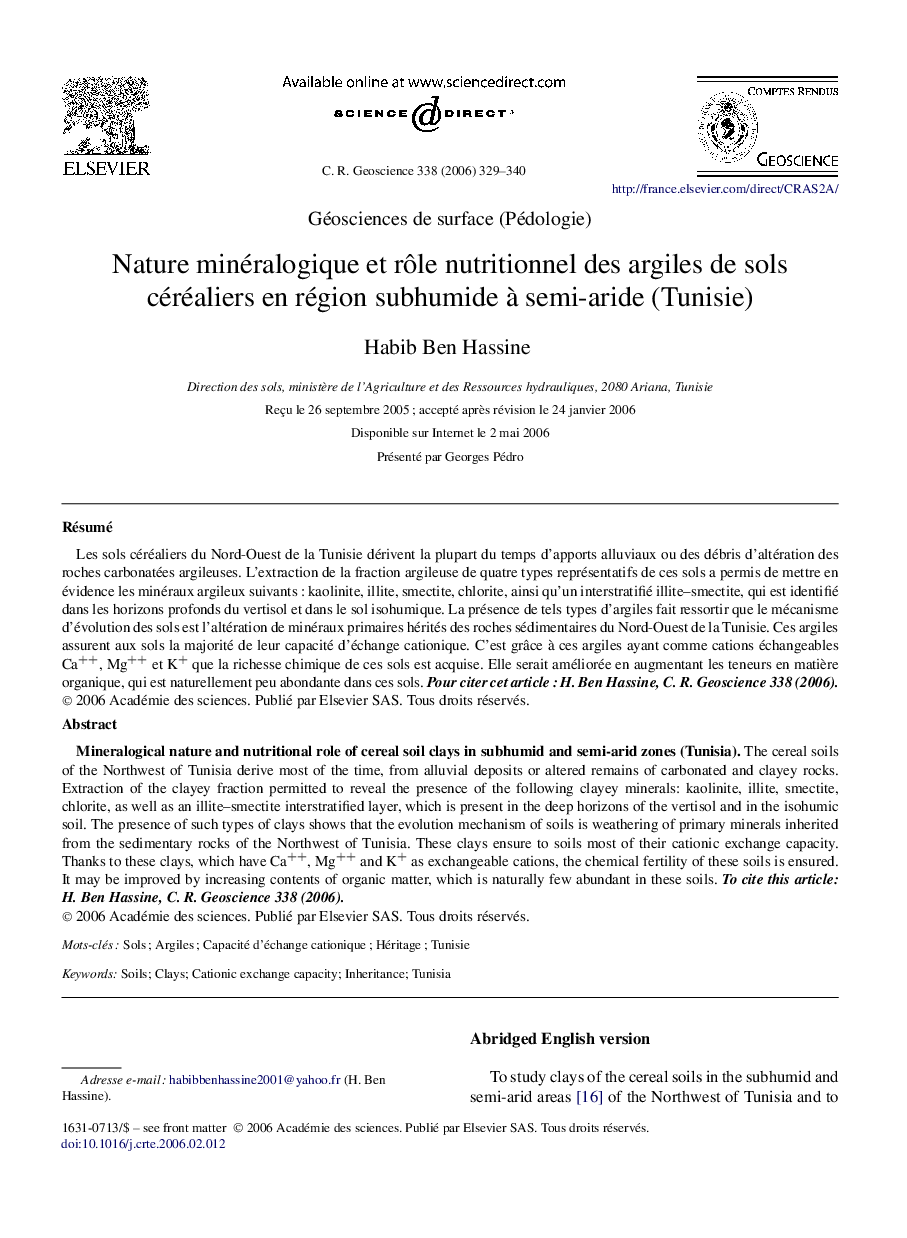| Article ID | Journal | Published Year | Pages | File Type |
|---|---|---|---|---|
| 4463238 | Comptes Rendus Geoscience | 2006 | 12 Pages |
RésuméLes sols céréaliers du Nord-Ouest de la Tunisie dérivent la plupart du temps d'apports alluviaux ou des débris d'altération des roches carbonatées argileuses. L'extraction de la fraction argileuse de quatre types représentatifs de ces sols a permis de mettre en évidence les minéraux argileux suivants : kaolinite, illite, smectite, chlorite, ainsi qu'un interstratifié illite–smectite, qui est identifié dans les horizons profonds du vertisol et dans le sol isohumique. La présence de tels types d'argiles fait ressortir que le mécanisme d'évolution des sols est l'altération de minéraux primaires hérités des roches sédimentaires du Nord-Ouest de la Tunisie. Ces argiles assurent aux sols la majorité de leur capacité d'échange cationique. C'est grâce à ces argiles ayant comme cations échangeables Ca++, Mg++ et K+ que la richesse chimique de ces sols est acquise. Elle serait améliorée en augmentant les teneurs en matière organique, qui est naturellement peu abondante dans ces sols. Pour citer cet article : H. Ben Hassine, C. R. Geoscience 338 (2006).
The cereal soils of the Northwest of Tunisia derive most of the time, from alluvial deposits or altered remains of carbonated and clayey rocks. Extraction of the clayey fraction permitted to reveal the presence of the following clayey minerals: kaolinite, illite, smectite, chlorite, as well as an illite–smectite interstratified layer, which is present in the deep horizons of the vertisol and in the isohumic soil. The presence of such types of clays shows that the evolution mechanism of soils is weathering of primary minerals inherited from the sedimentary rocks of the Northwest of Tunisia. These clays ensure to soils most of their cationic exchange capacity. Thanks to these clays, which have Ca++, Mg++ and K+ as exchangeable cations, the chemical fertility of these soils is ensured. It may be improved by increasing contents of organic matter, which is naturally few abundant in these soils. To cite this article: H. Ben Hassine, C. R. Geoscience 338 (2006).
